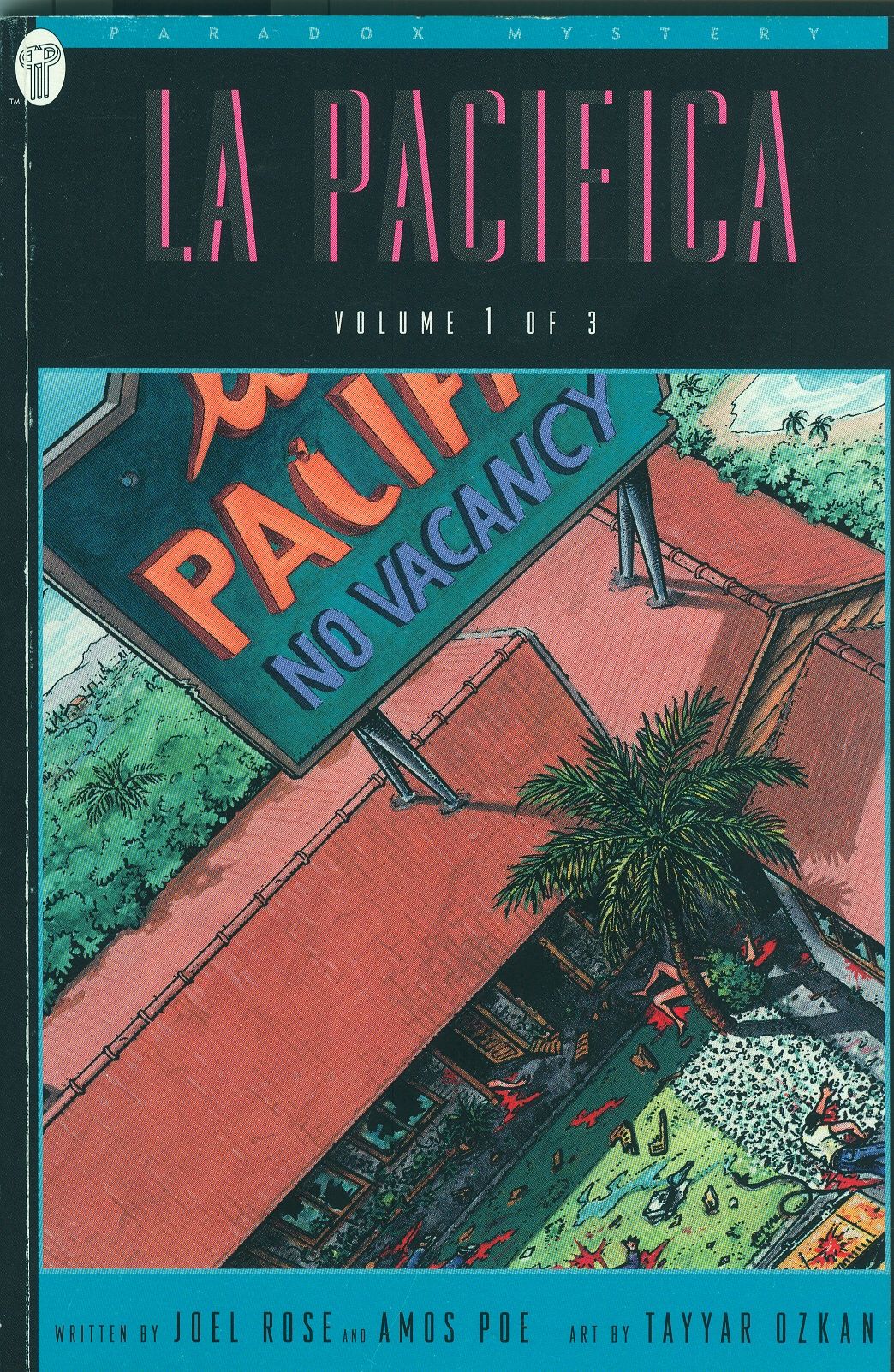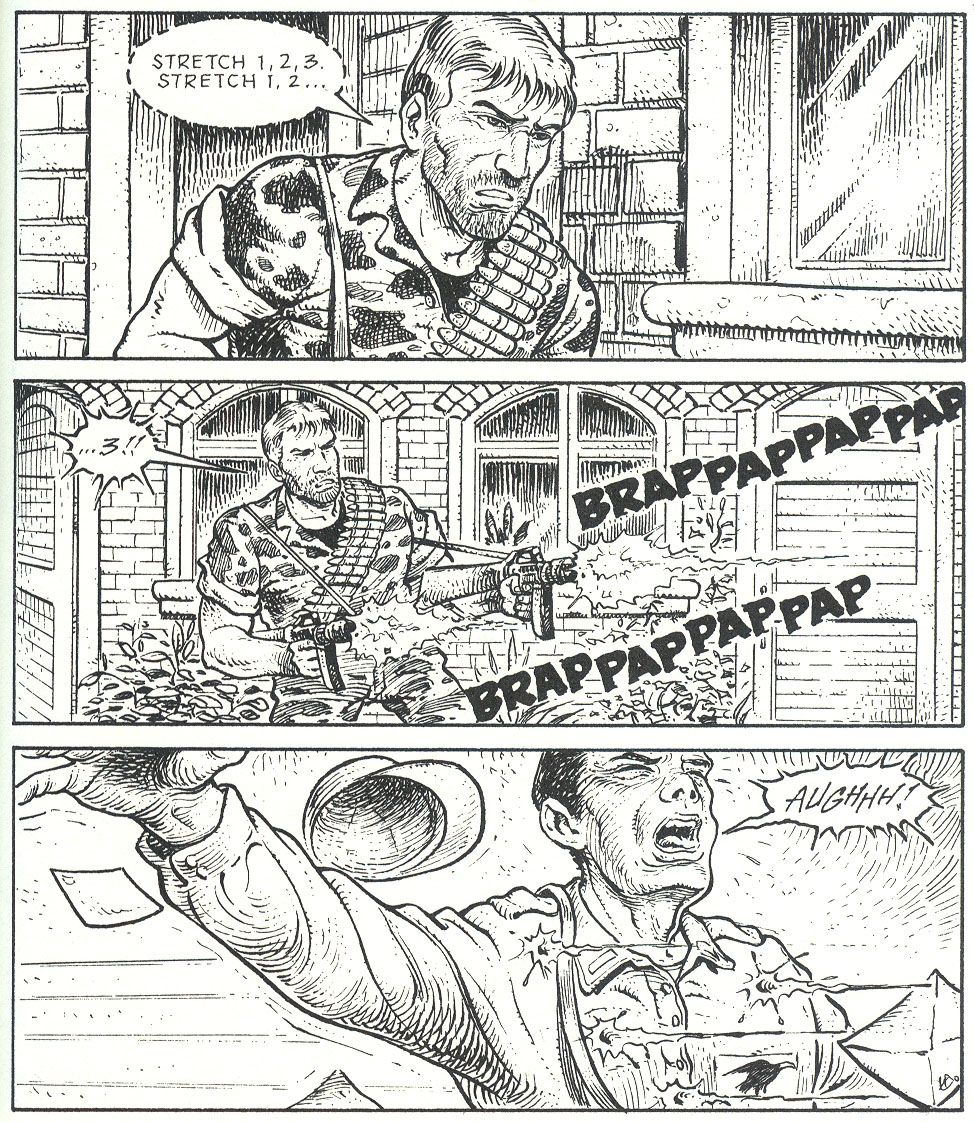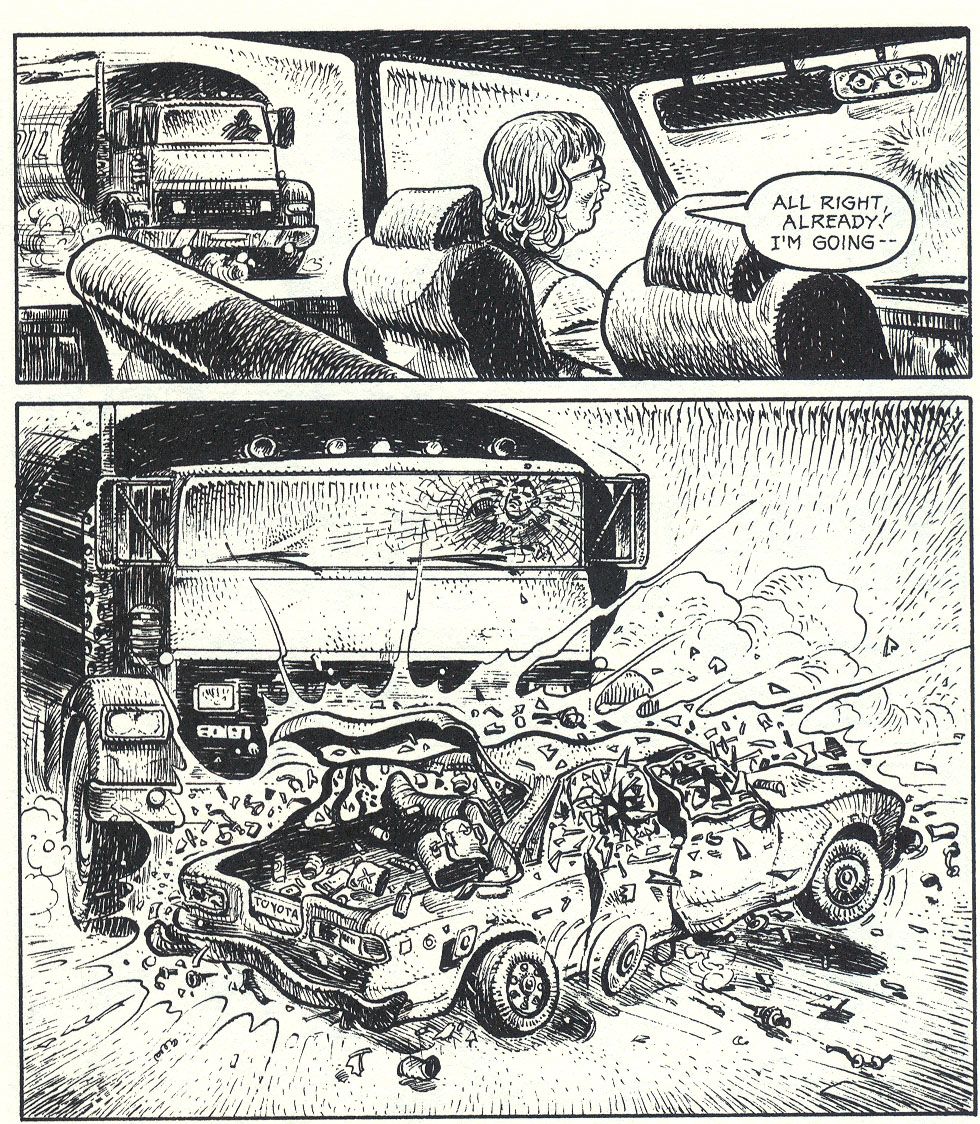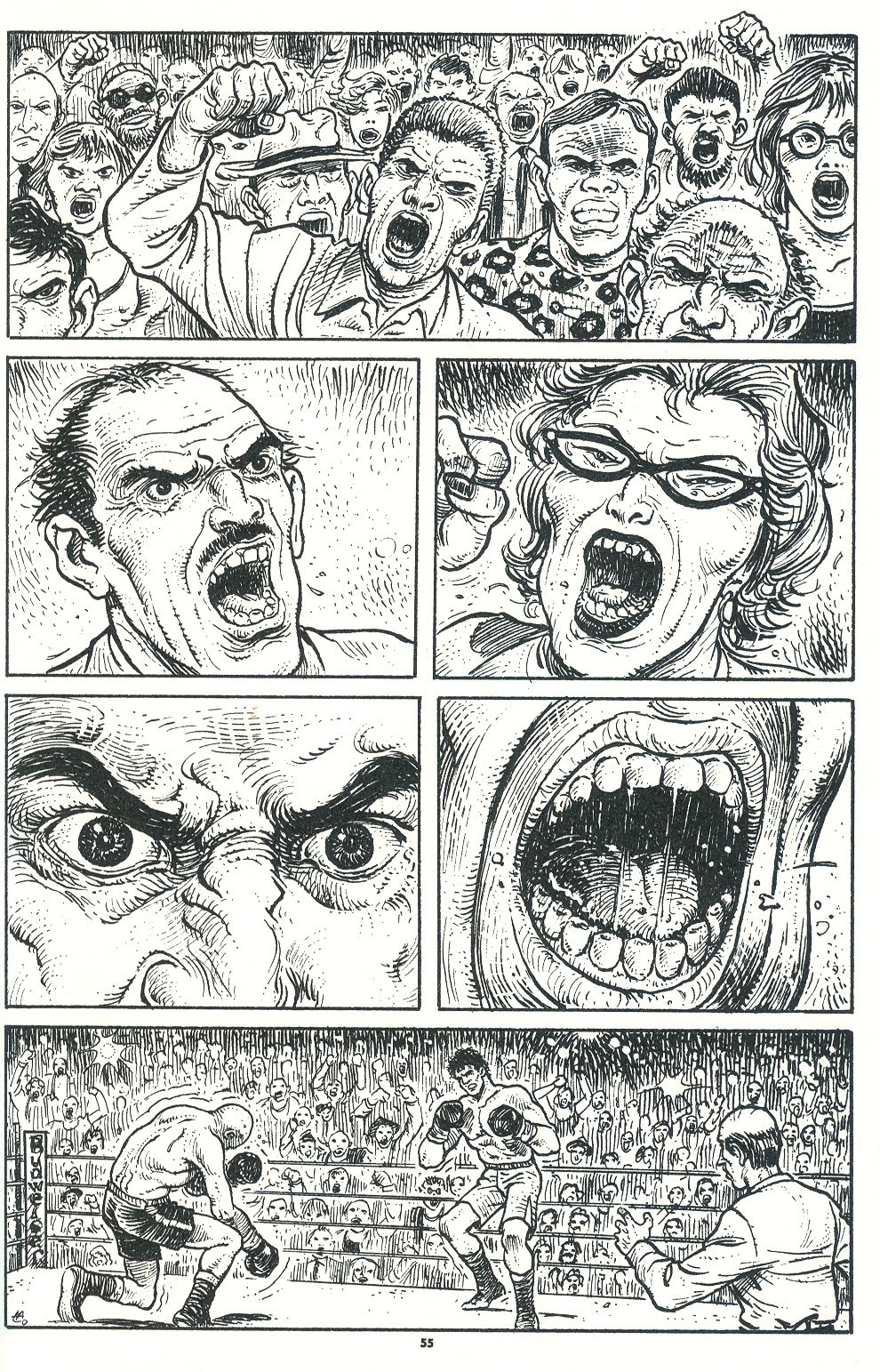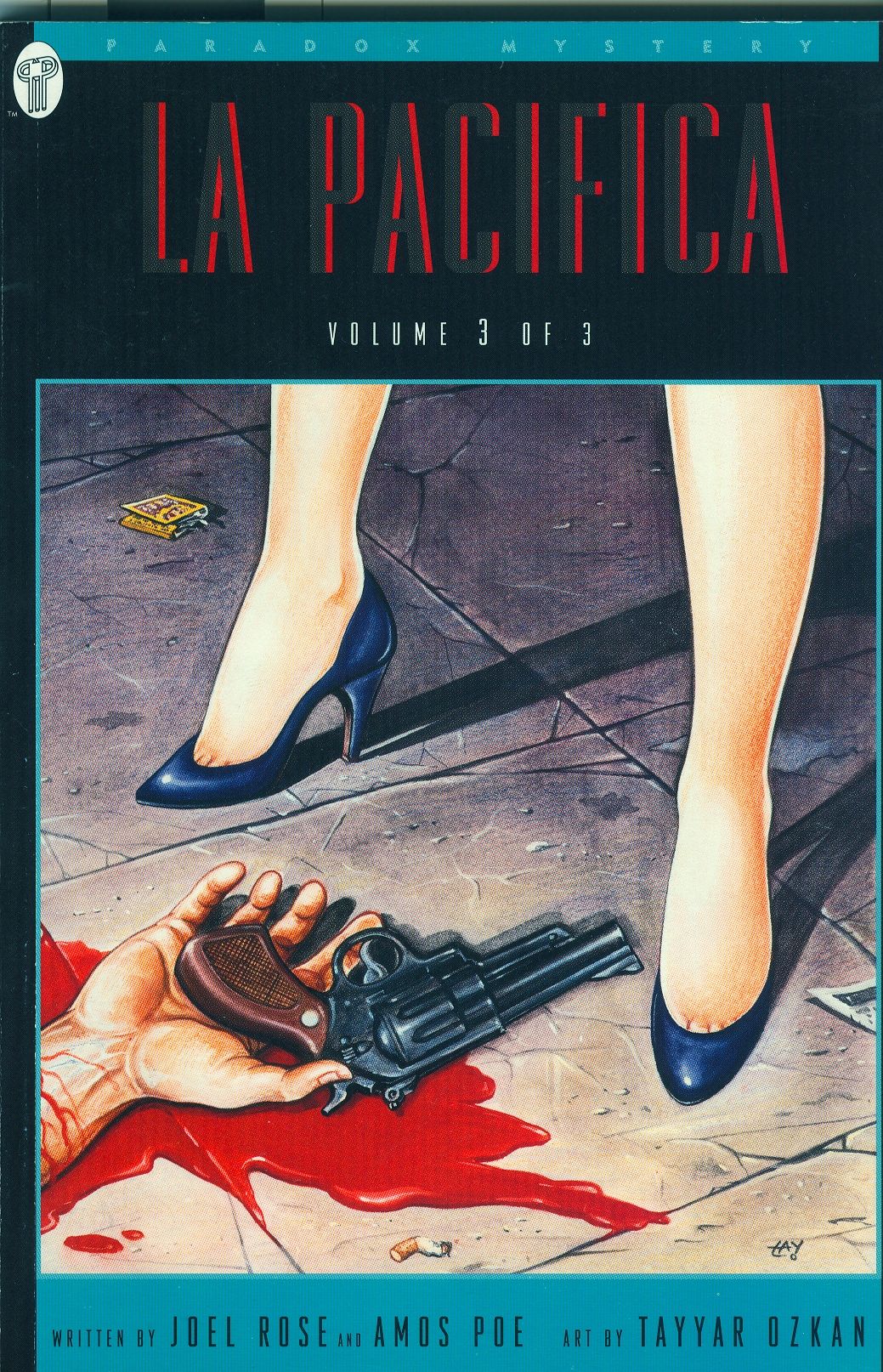In 1993, around the same time Vertigo debuted, DC Comics created Paradox Press. The imprint, much like the ill-fated Piranha Press that preceded it, was an attempt to create a more sophisticated, less genre-dependent brand of comics that would ostensibly appeal to the average reader not particularly interested in whatever Superman or The Sandman had to offer. It was to be a three-pronged attack, with the oversize Big Books line offering an anthology-like approach to various nonfiction material (i.e. crime, urban legends, pirates, etc.); the main line publishing more literary fare like Brooklyn Dreams and Stuck Rubber Baby; and Paradox Mystery, the title of which is self-explanatory.
The debut book in the mystery line was La Pacifica, a three-volume saga of sex and violence and femme fatales that wound up being one of the best things the imprint ever published.
(Note: Violent images lurk below ... )
Written by novelist Joel Rose and No Wave filmmaker Amos Poe and drawn by Tayyar Ozkan, the story focused on Vietnam vet Don Cooper, a man who, despite perhaps being haunted by memories of the battlefield, seems to be doing all right for himself, owning a decent-looking California motel and living in sin with his well-proportioned cousin.
Then one morning one of his guests goes insane and starts shooting up the place, killing all of the guests and almost killing Cooper. As he recovers from his wounds, Cooper becomes obsessed with finding out what drove this man to commit such a heinous crime. Refusing to chalk it up to mere insanity, his only clue is a mysterious girlfriend. As he tries to track her down, he starts a journey that takes him around the country, and discovers that this woman has left a lot of murderous, desperate men in her wake. What is it about this woman that drives so many men over the edge? And can Cooper himself avoid being ensnared in her trap?
It is, let's face it, a great hook for a story, a classic noir tale amped up to frenetic levels, although it thankfully never spirals into over-the-top self-parody or absurdism. One of the things that makes the series successful, however, is how the authors draw parallels between the blood these obsessed men shed and the violence that occurs in the rest of the world. Cooper lives in an amoral universe, one where random violence and horrible tragedies occur at an almost rapid-fire pace -- little old ladies driving clunkers are run over by tractor-trailers; cars explode, killing entire families; a peaceful game of billiards can quickly deteriorate into an ugly brawl. Bad things happen everywhere and seemingly any time, and what are you gonna do about it?
As good as the plot is, it's Ozkan that's the central draw here. Cramming every panel with detail, usually of angry, occasionally grotesque characters, he adheres to an elongated four-panel grid (although he sometimes breaks it down further to eight panels) giving a cinematic, "widescreen" feel to the story. As Joe McCulloch noted in his own review, Ozkan's scratchy, jittery line unintentionally harkens back to seinen manga, although it occasionally lapses into outright cartoonishness, perhaps in order to better portray man's general inhumanity (it certainly isn't for laughs). To their credit, Rose and Poe don't fill the pages with unnecessary dialogue or attempt to get in Ozkan's way. In fact, whenever possible they try to let the pictures tell as much of the story as possible.
Despite its high quality, or perhaps because of its bleak attitude, La Pacifica has yet to be collected. To be honest, I don't think it made that much of an impact when it was first released. Certainly it didn't lead to much more comics work from either writer (although Rose is currently working on the Anthony Bourdain comic Get Jiro!) Ozkan found some success making smut for Eros Comics and his Caveman satire series for NBM. All the while, La Pacifica continues to be largely forgotten. Someone should remedy that oversight soon.


